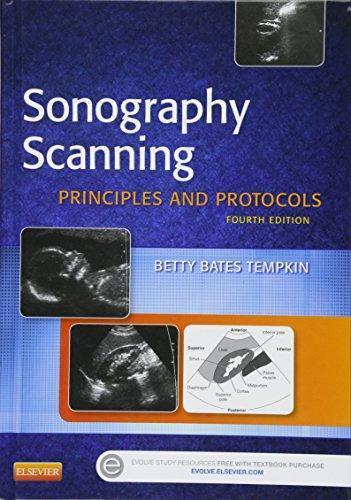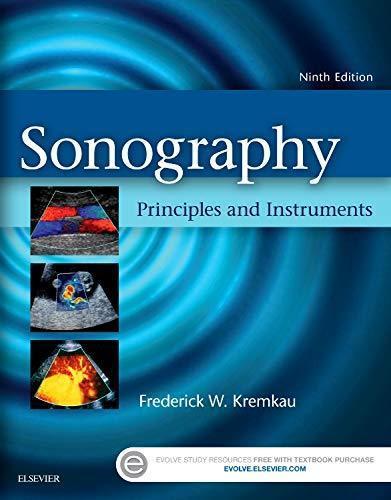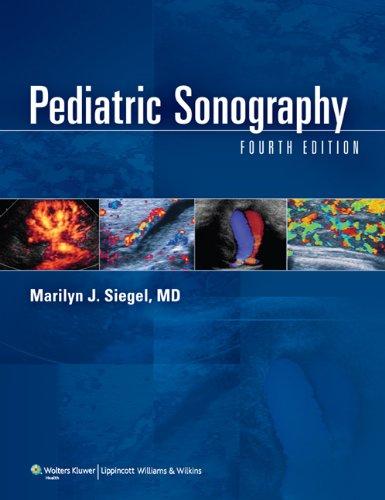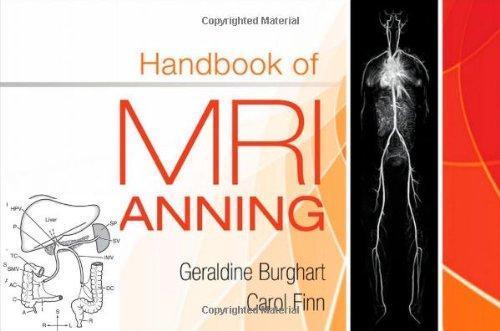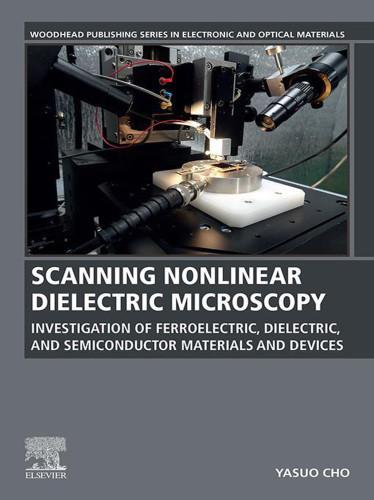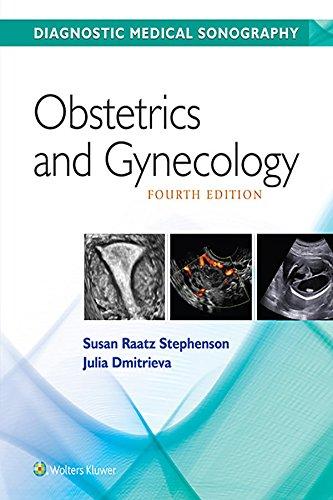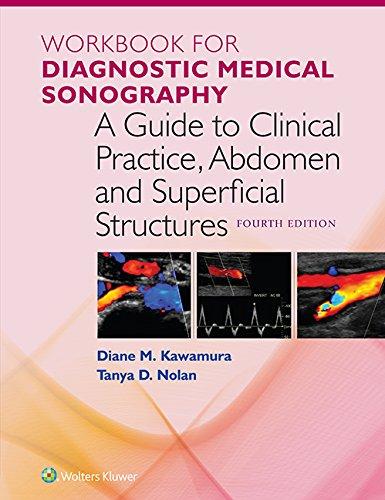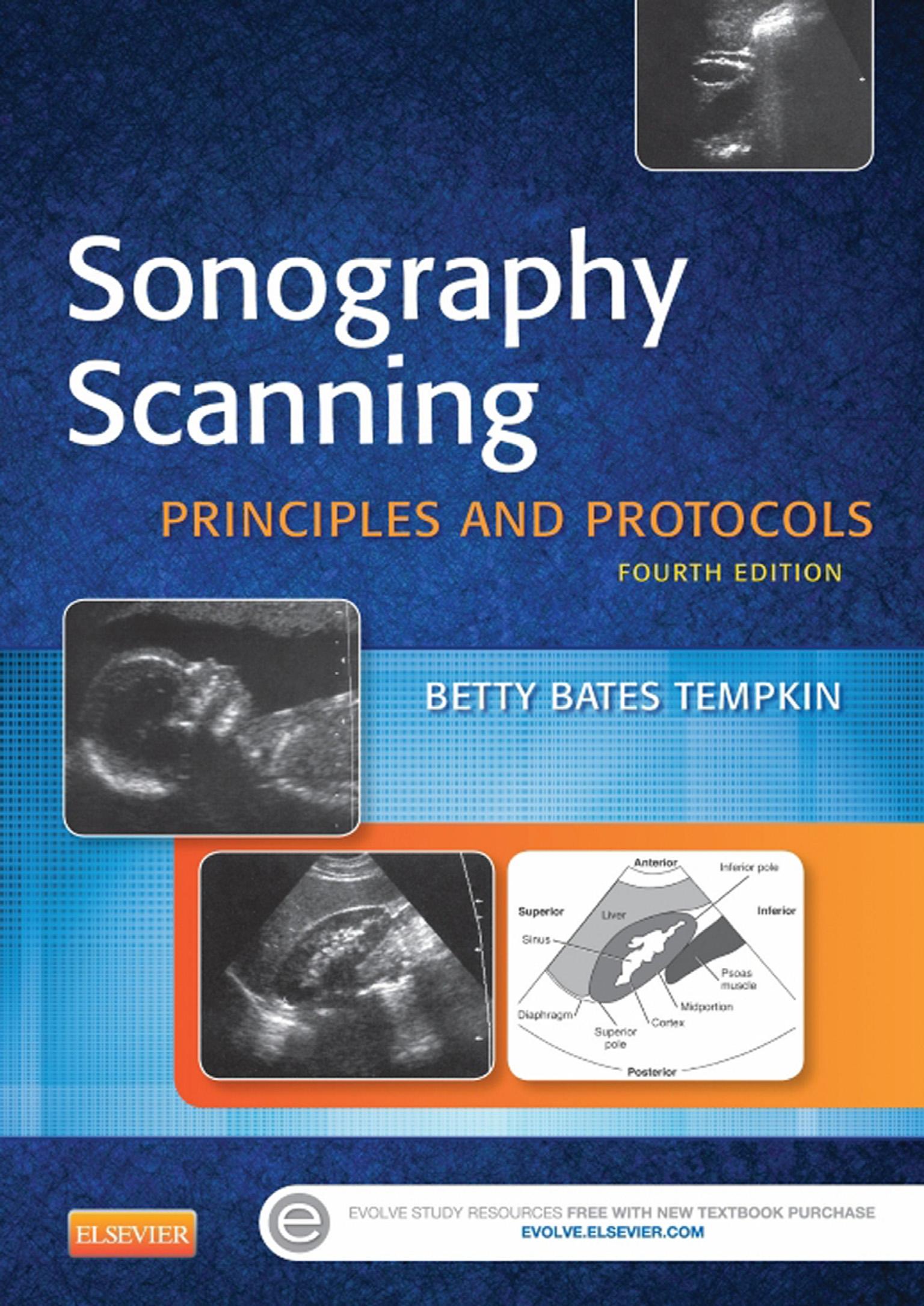Acknowledgments
Many thanks to Developmental Editors Beth LoGiudice and John Tomedi of Spring Hollow Press, my Project Manager Mary Stueck at Elsevier, and Lois Schubert at Top Graphics. Their coordinated efforts and individual expertise make this a great new edition and they were a pleasure to work with.
I am always inspired and motivated by the feedback I receive from other sonographers, students, instructors, physicians, and peer reviews. I love hearing from you, and try to incorporate your suggestions in each new edition.
A special thank you to the American Institute of Ultrasound in Medicine (AIUM) for agreeing to include applicable AIUM guidelines in the book. This collaboration greatly benefits the reader and ultimately the ultrasound community.
Finally, to those who touch my heart—David, Max, and my closest friends—sincere thanks for your continued support and interest!
Betty Bates Tempkin, BA, RT(R), RDMS
PART I GENERAL PRINCIPLES
1 Guidelines
Betty Bates Tempkin
How To Use This Text, 3
Professional Standards, 4
Clinical Standards, 6
Ergonomics and Proper Use of Ultrasound Equipment, 8
Imaging Criteria, 8
Image Documentation Criteria, 9 Case Presentation, 10
Describing Sonographic Findings, 10
Review Questions, 11
2 Scanning Planes and Scanning Methods
Betty Bates Tempkin
Scanning Planes Defined, 15
Scanning Planes Interpreted, 16
Sagittal Scanning Plane, 16
Transverse Scanning Plane, 18
Coronal Scanning Plane, 20
Scanning Methods, 21
Transducers, 21
How to Use the Transducer, 22
How to Take Accurate Images and Measurements, 23 Surface Landmarks, 26
Review Questions, 27
PART II PATHOLOGY
3 Scanning Protocol for Abnormal Findings/Pathology
Betty Bates Tempkin
Criteria for Evaluating Abnormal Findings/Pathology, 31
Criteria for Documenting Abnormal Findings/Pathology, 33
Criteria for Describing the Sonographic Appearance of Abnormal Findings/Pathology, 36
Required Images for Abnormal Findings/Pathology, 42 Review Questions, 43
PART III ABDOMINAL SCANNING PROTOCOLS
4 Abdominal Aorta Scanning Protocol
Betty Bates Tempkin
Overview, 51
Location, 51
Anatomy, 52
Physiology, 52
Sonographic Appearance, 52 Normal Variants, 54
Preparation, 54
Patient Prep, 54
Transducer, 54
Breathing Technique, 54
Patient Position, 54
Abdominal Aorta Survey Steps, 55
Abdominal Aorta • Longitudinal Survey, 55
SAGITTAL PLANE • TRANSABDOMINAL ANTERIOR APPROACH, 55
Abdominal Aorta • Axial Survey, 58
TRANSVERSE PLANE • TRANSABDOMINAL ANTERIOR APPROACH, 58
Abdominal Aorta Required Images, 59
Abdominal Aorta • Longitudinal Images, 59
SAGITTAL PLANE • TRANSABDOMINAL ANTERIOR APPROACH, 59
Abdominal Aorta • Axial Images, 62
TRANSVERSE PLANE • TRANSABDOMINAL ANTERIOR APPROACH, 62
Required Images When the Abdominal Aorta is Part of Another Study, 66
Review Questions, 67
5 Inferior Vena Cava Scanning Protocol
Betty Bates Tempkin
Overview, 71
Location, 71
Anatomy, 72
Physiology, 72
Sonographic Appearance, 72
Normal Variants, 74
Preparation, 74
Patient Prep, 74
Transducer, 74
Breathing Technique, 74
Patient Position, 74
Inferior Vena Cava Survey Steps, 75
Inferior Vena Cava • Longitudinal Survey, 75
SAGITTAL PLANE • TRANSABDOMINAL ANTERIOR APPROACH, 75
Inferior Vena Cava • Axial Survey, 79
TRANSVERSE PLANE • TRANSABDOMINAL ANTERIOR APPROACH, 79
Inferior Vena Cava Required Images, 80
Inferior Vena Cava • Longitudinal Images, 80
SAGITTAL PLANE • TRANSABDOMINAL ANTERIOR APPROACH, 80
Inferior Vena Cava • Axial Images, 83
TRANSVERSE PLANE • TRANSABDOMINAL ANTERIOR APPROACH, 83
Required Images When the Inferior Vena Cava is Part of Another Study, 85
Review Questions, 86
6 Liver Scanning Protocol
Betty Bates Tempkin
Overview, 94
Location, 94
Anatomy, 94
LIVER LOBES, 95
LIVER SEGMENTS, 95
LIVER SURFACES, 96
LIVER LIGAMENTS, 97
LIVER FISSURES, 98
LIVER VESSELS AND DUCTS, 98
Physiology, 100
Sonographic Appearance, 101
Normal Variants, 103
Preparation, 103
Patient Prep, 103
Transducer, 103
Breathing Technique, 103
Patient Position, 103
Liver Survey Steps, 104
Liver • Longitudinal Survey, 104
SAGITTAL PLANE • TRANSABDOMINAL ANTERIOR APPROACH, 104
Liver • Axial Survey, 107
TRANSVERSE PLANE • TRANSABDOMINAL ANTERIOR APPROACH, 107
Liver Required Images, 110
Liver • Longitudinal Images, 110
SAGITTAL PLANE • TRANSABDOMINAL ANTERIOR APPROACH, 110
Liver • Axial Images, 113
TRANSVERSE PLANE • TRANSABDOMINAL ANTERIOR APPROACH, 113
Required Images When the Liver is Part of Another Study, 116
Review Questions, 116
7 Gallbladder and Biliary Tract Scanning Protocol
Betty Bates Tempkin
Overview, 121
Location, 121
Anatomy, 122
Physiology, 123
Sonographic Appearance, 124
Normal Variants, 126
GALLBLADDER, 126
BILIARY TRACT, 126
Preparation, 127
Patient Prep, 127
Transducer, 127
Breathing Technique, 127
Patient Position, 127
Gallbladder and Biliary Tract Survey Steps, 128
Gallbladder • Longitudinal Survey, 128
SAGITTAL PLANE • TRANSABDOMINAL ANTERIOR APPROACH • FIRST
PATIENT POSITION, 128
Gallbladder • Axial Survey, 130
TRANSVERSE PLANE • TRANSABDOMINAL ANTERIOR APPROACH • FIRST
PATIENT POSITION, 130
Biliary Tract • Longitudinal Survey, 131
SAGITTAL PLANE • TRANSABDOMINAL ANTERIOR APPROACH • FIRST
PATIENT POSITION, 131
Biliary Tract • Axial Survey, 132
TRANSVERSE PLANE • TRANSABDOMINAL ANTERIOR APPROACH • FIRST PATIENT POSITION, 132
Gallbladder • Longitudinal Survey, 133
SAGITTAL PLANE • TRANSABDOMINAL ANTERIOR APPROACH • SECOND
PATIENT POSITION, 133
Gallbladder and Biliary Tract Required Images, 133
Gallbladder • Longitudinal Images, 133
SAGITTAL PLANE • TRANSABDOMINAL ANTERIOR APPROACH • FIRST
PATIENT POSITION/SUPINE, 133
Gallbladder • Axial Images, 135
TRANSVERSE PLANE • TRANSABDOMINAL ANTERIOR APPROACH • FIRST PATIENT POSITION/SUPINE, 135
Biliary Tract • Longitudinal Images, 137
SAGITTAL PLANE • TRANSABDOMINAL ANTERIOR APPROACH • FIRST
PATIENT POSITION, 137
Gallbladder • Longitudinal Image, 139
SAGITTAL PLANE • TRANSABDOMINAL ANTERIOR APPROACH • SECOND
PATIENT POSITION/LEFT LATERAL DECUBITUS, 139
Gallbladder • Axial Image, 139
TRANSVERSE PLANE • TRANSABDOMINAL ANTERIOR APPROACH • SECOND PATIENT POSITION/LEFT LATERAL DECUBITUS, 139
Required Images When the Gallbladder and Biliary Tract are Part of Another Study, 140
Gallbladder • Longitudinal Image, 140
SAGITTAL PLANE • TRANSABDOMINAL ANTERIOR APPROACH, 140
Gallbladder • Axial Image, 140
TRANSVERSE PLANE • TRANSABDOMINAL ANTERIOR APPROACH, 140
Biliary Tract • Longitudinal Images, 141
SAGITTAL PLANE • TRANSABDOMINAL ANTERIOR APPROACH, 141
Review Questions, 143
8 Pancreas Scanning Protocol
Betty Bates Tempkin
Overview, 147
Location, 147
Anatomy, 148
Physiology, 149
Sonographic Appearance, 149
Normal Variants, 155
Preparation, 155
Patient Prep, 155
Transducer, 156
Breathing Technique, 156
Patient Position, 156
Pancreas Survey Steps, 156
Pancreas • Longitudinal Survey, 156
TRANSVERSE PLANE • TRANSABDOMINAL ANTERIOR APPROACH, 156
Pancreas • Axial Survey, 160
SAGITTAL PLANE • TRANSABDOMINAL ANTERIOR APPROACH, 160
Pancreas Required Images, 162
Pancreas • Longitudinal Images, 162
TRANSVERSE PLANE • TRANSABDOMINAL ANTERIOR APPROACH, 162
Pancreas • Axial Images, 164
SAGITTAL PLANE • TRANSABDOMINAL ANTERIOR APPROACH, 164
Required Images When the Pancreas is Part of Another Study, 166
Pancreas • Longitudinal Images, 166
TRANSVERSE PLANE • TRANSABDOMINAL ANTERIOR APPROACH, 166
Pancreas • Axial Image, 167
SAGITTAL PLANE • TRANSABDOMINAL ANTERIOR APPROACH, 167
Review Questions, 168
9 Renal Scanning Protocol
Betty Bates Tempkin Overview, 171 Location, 171
Anatomy, 172
Physiology, 173
Sonographic Appearance, 173
Normal Variants, 176
Preparation, 176
Patient Prep, 176
Transducer, 176
Breathing Technique, 176
Patient Position, 176
RIGHT KIDNEY, 176
LEFT KIDNEY, 177
Renal Survey Steps, 177
Right Kidney • Longitudinal Survey, 177
SAGITTAL PLANE • TRANSABDOMINAL ANTERIOR APPROACH, 177
Right Kidney • Axial Survey, 179
TRANSVERSE PLANE • TRANSABDOMINAL ANTERIOR APPROACH, 179
Left Kidney • Longitudinal Survey, 181
CORONAL PLANE • LEFT LATERAL APPROACH, 181
Left Kidney • Axial Survey, 183
TRANSVERSE PLANE • LEFT LATERAL APPROACH, 183
Kidneys Required Images, 185
Right Kidney • Longitudinal Images, 185
SAGITTAL PLANE • TRANSABDOMINAL ANTERIOR APPROACH, 185
Right Kidney • Axial Images, 189
TRANSVERSE PLANE • TRANSABDOMINAL ANTERIOR APPROACH, 189
Left Kidney • Longitudinal Images, 191
CORONAL PLANE • LEFT LATERAL APPROACH, 191
Left Kidney • Axial Images, 195
TRANSVERSE PLANE • LEFT LATERAL APPROACH, 195
Required Images When the Kidneys are Part of Another Study, 197
Right Kidney • Longitudinal Images, 197
SAGITTAL PLANE • TRANSABDOMINAL ANTERIOR APPROACH, 197
Right Kidney • Axial Image, 197
TRANSVERSE PLANE • TRANSABDOMINAL ANTERIOR APPROACH, 197
Left Kidney • Longitudinal Image(s), 198
CORONAL PLANE • LEFT LATERAL APPROACH, 198
Left Kidney • Axial Image, 198
TRANSVERSE PLANE • LEFT LATERAL APPROACH, 198
Review Questions, 199
10 Spleen Scanning Protocol
Betty Bates Tempkin
Overview, 203
Location, 203
Anatomy, 204
Physiology, 205
Sonographic Appearance, 205
Normal Variants, 206
Preparation, 207
Patient Prep, 207
Transducer, 207
Breathing Technique, 207
Patient Position, 207
Spleen Survey Steps, 207
Spleen • Longitudinal Survey, 207
CORONAL PLANE • LEFT LATERAL APPROACH, 207
Spleen • Axial Survey, 209
TRANSVERSE PLANE • LEFT LATERAL APPROACH, 209
Spleen Required Images, 210
Spleen • Longitudinal Images, 210
CORONAL PLANE • LEFT LATERAL APPROACH, 210
Spleen • Axial Images, 211
TRANSVERSE PLANE • LEFT LATERAL APPROACH, 211
Required Images When the Spleen is Part of Another Study, 213
Review Questions, 213
PART IV PELVIC SCANNING PROTOCOLS
11 Female Pelvis Scanning Protocol
Betty Bates Tempkin
Overview, 220
Anatomy, 220
TRUE PELVIS AND FALSE PELVIS, 220
PELVIC REGIONS, 220
VAGINA, 221
UTERUS, 221
UTERINE TUBES (FALLOPIAN TUBES OR OVIDUCTS), 223
OVARIES, 224
URINARY BLADDER, 225
URETERS, 225
COLON, 225
MUSCULATURE, 225
LIGAMENTS, 226
PELVIC SPACES, 227
Physiology, 227
FEMALE REPRODUCTIVE SYSTEM, 227
Sonographic Appearance, 228
VAGINA, UTERUS, UTERINE TUBES, OVARIES, URINARY BLADDER, URETERS, SIGMOID COLON, RECTUM, PELVIC MUSCULATURE, BROAD LIGAMENTS, AND PELVIC PERITONEAL SPACES, 228
Normal Variants, 232
Preparation, 233
Patient Prep, 233
Transducer, 233
Breathing Technique, 234
Patient Position, 234
Female Pelvis Survey, 234
Vagina, Uterus, and Pelvic Cavity Survey Steps, 234
Vagina, Uterus, and Pelvic Cavity • Longitudinal Survey, 234
SAGITTAL PLANE • ANTERIOR APPROACH, 234
Vagina, Uterus, and Pelvic Cavity • Axial Survey, 236
TRANSVERSE PLANE • ANTERIOR APPROACH, 236
Ovaries Survey Steps, 238
Right Ovary • Longitudinal Survey, 238
SAGITTAL PLANE • ANTERIOR APPROACH, 238
Right Ovary • Axial Survey, 240
TRANSVERSE PLANE • ANTERIOR APPROACH, 240
Left Ovary • Longitudinal and Axial Surveys, 240
Female Pelvis Required Images, 240
Vagina, Uterus, and Pelvic Cavity • Longitudinal Images, 241
SAGITTAL PLANE • ANTERIOR APPROACH, 241
Vagina, Uterus, and Pelvic Cavity • Axial Images, 244
TRANSVERSE PLANE • ANTERIOR APPROACH, 244
Right Ovary • Longitudinal Images, 247
SAGITTAL PLANE • ANTERIOR APPROACH, 247
Right Ovary • Axial Images, 248
TRANSVERSE PLANE • ANTERIOR APPROACH, 248
Left Ovary • Longitudinal Images, 249
SAGITTAL PLANE • ANTERIOR APPROACH, 249
Left Ovary • Axial Images, 250
TRANSVERSE PLANE • ANTERIOR APPROACH, 250
Review Questions, 251
12 Transvaginal Scanning Protocol for the Female Pelvis
Betty Bates Tempkin
Overview, 255
Preparation, 256
Patient Prep, 256
Patient Position, 256
Transducer, 256
Image Orientation, 256
Transvaginal Female Pelvis Survey, 259
Uterus and Adnexa • Longitudinal Survey, 259
SAGITTAL PLANE • INFERIOR APPROACH, 259
Uterus and Adnexa • Axial Survey, 260
CORONAL PLANE • INFERIOR APPROACH, 260
Right Ovary • Axial Survey, 260
CORONAL PLANE • INFERIOR APPROACH, 260
Right Ovary • Longitudinal Survey, 261
SAGITTAL PLANE • INFERIOR APPROACH, 261
Left Ovary • Axial Survey, 261
CORONAL PLANE • INFERIOR APPROACH, 261
Left Ovary • Longitudinal Survey, 262
SAGITTAL PLANE • INFERIOR APPROACH, 262
Transvaginal Scanning Protocol for the Female Pelvis Required Images, 262
Uterus and Adnexa • Transvaginal Longitudinal Images, 262
SAGITTAL PLANE • INFERIOR APPROACH, 262
Uterus and Adnexa • Transvaginal Axial Images, 265
CORONAL PLANE • INFERIOR APPROACH, 265
Right Ovary • Transvaginal Axial Images, 267
CORONAL PLANE • INFERIOR APPROACH, 267
Right Ovary • Transvaginal Longitudinal Images, 268
SAGITTAL PLANE • INFERIOR APPROACH, 268
Left Ovary • Transvaginal Axial Images, 269
CORONAL PLANE • INFERIOR APPROACH, 269
Left Ovary • Transvaginal Longitudinal Images, 270
SAGITTAL PLANE • INFERIOR APPROACH, 270 Review Questions, 271
13 Obstetrical Scanning Protocol for First, Second, and Third Trimesters
Betty Bates Tempkin Overview, 276
Maternal Anatomy and Physiology, 276
First Trimester, 276
Anatomy and Sonographic Appearance During Early First Trimester, 277
GESTATIONAL SAC, 277
Determining Gestational Age During the First Half of the First Trimester, 278
MEAN SAC DIAMETER, 278
Sonographic Appearance and Development During the First Half of the First Trimester, 278
DOUBLE SAC SIGN, 278
YOLK SAC, 279
DOUBLE BLEB SIGN, 280
Determining Gestational Age During the Second Half of the First Trimester, 280
CROWN RUMP LENGTH, 280
Sonographic Appearance and Development During the Second Half of the First Trimester, 281
AMNIOTIC SAC, 281
EMBRYONIC HEART, 281
SKELETAL SYSTEM, 281
UMBILICAL CORD, 281
TENTH WEEK, 282
END OF THE FIRST TRIMESTER, 282 Second and Third Trimesters, 282
Sonographic Appearance and Development During the Second and Third Trimesters, 282
PLACENTA, 283
PLACENTAL GRADING, 283
PLACENTAL PREVIA, 283
UMBILICAL CORD, 285
UMBILICAL CORD INSERTION, 286
Sonographic Appearance of Fetal Anatomy, 286
SKELETAL SYSTEM, 287
CARDIOVASCULAR SYSTEM, 288
RESPIRATORY SYSTEM, 289
GASTROINTESTINAL SYSTEM, 289
GENITOURINARY SYSTEM, 291
INTRACRANIAL ANATOMY, 293
Determining GA During the Second and Third Trimesters, 295
BIPARIETAL DIAMETER MEASUREMENT, 296
HEAD CIRCUMFERENCE, 297
ABDOMINAL CIRCUMFERENCE, 297
LONG BONE MEASUREMENTS, 297
Preparation, 298
Patient Prep, 298
PATIENT PREP FOR TRANSABDOMINAL APPROACH, 298
PATIENT PREP FOR TRANSVAGINAL APPROACH, 298
Transducer, 298
TRANSDUCER FOR TRANSABDOMINAL APPROACH, 298
TRANSDUCER FOR TRANSVAGINAL APPROACH, 298
Patient Position, 299
PATIENT POSITION FOR TRANSABDOMINAL APPROACH, 299
PATIENT POSITION FOR TRANSVAGINAL APPROACH, 299
Obstetrics Survey, 299
Female Pelvis Survey, 299
Vagina • Uterus • Adnexa, 299
SAGITTAL PLANE • TRANSABDOMINAL APPROACH, 299
TRANSVERSE PLANE • TRANSABDOMINAL APPROACH, 301
First Trimester Survey, 303
Gestational Sac • Yolk Sac • Embryo, 303
SAGITTAL PLANE • TRANSABDOMINAL APPROACH, 303
TRANSVERSE PLANE • TRANSABDOMINAL APPROACH, 303
Second and Third Trimester Survey (The Fetus), 304
Determining Fetal Position/Presentation, 304
Thoracic Cavity • Abdominopelvic Cavity • Fetal Limbs • Fetal Spine • Fetal Cranium, 304
FETAL LONG AXIS • TRANSABDOMINAL APPROACH, 304
Required Images for Obstetrics, 306
Early First Trimester, 306
SAGITTAL PLANE • TRANSABDOMINAL APPROACH, 306
SCANNING PLANE DETERMINED BY POSITION OF ANATOMY • TRANSABDOMINAL APPROACH, 307
Later First Trimester, 310
SAGITTAL PLANE • TRANSABDOMINAL APPROACH, 310
SCANNING PLANE DETERMINED BY POSITION OF ANATOMY • TRANSABDOMINAL APPROACH, 311
Second and Third Trimester, 313
SAGITTAL PLANE • TRANSABDOMINAL APPROACH, 313
SCANNING PLANE DETERMINED BY POSITION OF ANATOMY • TRANSABDOMINAL APPROACH, 314
SAGITTAL PLANE • TRANSABDOMINAL APPROACH, 314
SCANNING PLANE DETERMINED BY POSITION OF ANATOMY • TRANSABDOMINAL APPROACH, 315
Multiple Gestations, 333
ADDITIONAL REQUIRED IMAGES, 333
The Biophysical Profile, 334
Required Images for a Biophysical Profile, 335
Review Questions, 338
14 Male Pelvis Scanning Protocol for the Prostate Gland, Scrotum, and Penis
Betty Bates Tempkin
Overview, 344
Anatomy, 344
PROSTATE GLAND AND SEMINAL VESICLES, 344
SCROTUM AND TESTICLES, 345
PENIS, 347
Physiology, 347
Sonographic Appearance, 349
PROSTATE GLAND AND SEMINAL VESICLES, 349
SCROTUM AND TESTICLES, 349
PENIS, 352
Preparation, 353
Patient Prep, 353
PROSTATE GLAND, 353
SCROTUM, 353
PENIS, 354
Transducer, 355
PROSTATE GLAND, 355
SCROTUM, 355
PENIS, 356
Patient Position, 356
PROSTATE GLAND, 356
SCROTUM, 356
PENIS, 356
Prostate Gland Survey, 356
Prostate • Axial Survey, 357
TRANSVERSE PLANE • RECTAL APPROACH, 357
Prostate • Longitudinal Survey, 357
SAGITTAL PLANE • RECTAL APPROACH, 358
Prostate Gland Required Images, 358
Prostate • Axial Images, 359
TRANSVERSE PLANE • RECTAL APPROACH, 359
Prostate • Longitudinal Images, 362
SAGITTAL PLANE • RECTAL APPROACH, 362
Scrotum Survey, 363
Scrotum • Longitudinal Survey, 363
SAGITTAL PLANE • ANTERIOR APPROACH, 363
Scrotum • Axial Survey, 366
TRANSVERSE PLANE • ANTERIOR APPROACH, 366
Scrotum Required Images, 369
Scrotum • Right Hemiscrotum • Longitudinal Images, 369
SAGITTAL PLANE • ANTERIOR APPROACH, 369
Scrotum • Right Hemiscrotum • Axial Images, 376
TRANSVERSE PLANE • ANTERIOR APPROACH, 376
Scrotum • Left Hemiscrotum • Longitudinal Images, 381
SAGITTAL PLANE • ANTERIOR APPROACH, 381
Scrotum • Left Hemiscrotum • Axial Images, 387
TRANSVERSE PLANE • ANTERIOR APPROACH, 387
Penis Survey, 392
Penis • Longitudinal Survey, 392
SAGITTAL PLANE • ANTERIOR APPROACH, 392
Penis • Axial Survey, 392
TRANSVERSE PLANE • ANTERIOR APPROACH, 392
Penis Required Images, 393
Penis • Longitudinal Images, 394
SAGITTAL PLANE • ANTERIOR APPROACH, 394
Penis • Axial Images, 394
TRANSVERSE PLANE • ANTERIOR APPROACH, 394
Review Questions, 395
PART V SMALL PARTS SCANNING PROTOCOLS
15 Musculoskeletal Scanning Protocol for Rotator Cuff, Carpal Tunnel, and Achilles Tendon
Amy T. Dela Cruz
Rotator Cuff Scanning Protocol Overview, 401
Location, 401
Anatomy, 402
Physiology, 402
Sonographic Appearance, 403 Preparation, 403
Patient Prep, 403
Transducer, 403
Patient Position, 403
Breathing Technique, 403
Rotator Cuff Survey and Required Images, 403
Biceps Tendon, 403
Subscapularis, 405
Supraspinatus, 406
Infraspinatus, 407
Teres Minor, 408
Carpal Tunnel Scanning Protocol Overview, 409 Location, 409
Anatomy, 409
Physiology, 410
Sonographic Appearance, 410 Preparation, 411
Patient Prep, 411
Transducer, 411
Patient Position, 411
Breathing Technique, 411
Carpal Tunnel Survey, 411
Transverse Plane, 411
Sagittal Plane, 413
Carpal Tunnel Required Images, 413
Transverse Images, 413
Sagittal Images, 414
Achilles Tendon Scanning Protocol Overview, 415 Location, 415
Anatomy, 415
Physiology, 415
Sonographic Appearance, 415
Preparation, 416
Patient Prep, 416
Transducer, 416
Breathing Technique, 416
Patient Position, 416
Achilles Tendon Survey, 416
Longitudinal Survey, 416
Transverse Survey, 416
Achilles Tendon Required Images, 417
Longitudinal Images, 417
Transverse Images, 418
Review Questions, 419
16 Thyroid and Parathyroid Glands Scanning Protocol
Wayne C. Leonhardt
Overview, 425
Location, 425
THYROID GLAND, 425
PARATHYROID GLANDS, 426
Anatomy, 426
THYROID GLAND, 426
PARATHYROID GLANDS, 426
Physiology, 427
THYROID GLAND, 427
PARATHYROID GLANDS, 427
Sonographic Appearance, 427
THYROID GLAND, 427
PARATHYROID GLANDS, 429
Color Flow Doppler Characteristics, 429
Normal Variants, 429
THYROID GLAND, 429
PARATHYROID GLANDS, 430
Preparation, 430
Patient Prep, 430
Transducer, 430
Breathing Technique, 430
Patient Position, 430
Thyroid Gland Survey Steps, 430
Lobes: Axial Survey Isthmus • Longitudinal Survey, 431
TRANSVERSE PLANE • ANTERIOR APPROACH, 431
Lobes: Longitudinal Survey, 433
SAGITTAL PLANE • ANTERIOR APPROACH, 433
Thyroid Gland Required Images, 435
Thyroid • Right Lobe • Axial Images, 435
TRANSVERSE PLANE • ANTERIOR APPROACH, 435
Thyroid • Right Lobe • Longitudinal Images, 437
SAGITTAL PLANE • ANTERIOR APPROACH, 437
Thyroid • Left Lobe • Axial Images, 438
TRANSVERSE PLANE • ANTERIOR APPROACH, 438
Thyroid • Left Lobe • Longitudinal Images, 439
SAGITTAL PLANE • ANTERIOR APPROACH, 439
Review Questions, 440
17 Breast Scanning Protocol
Betty Bates Tempkin
Clinical Reasoning, 445
Overview, 446
Anatomy, 446
Physiology, 446
Sonographic Appearance, 446
Normal Variants, 448
Preparation, 448
Patient Prep, 448
Transducer, 448
Patient Position, 448
PATIENT POSITION FOR BREAST LESION SCANNING, 448
PATIENT POSITION FOR WHOLE BREAST SCANNING, 448
Breast Lesion Survey Steps, 449
Longitudinal Survey, 449
SCANNING PLANE DETERMINED BY LESION SHAPE AND LIE • APPROACH DETERMINED BY LESION LOCATION, 449
Axial Survey, 449
SCANNING PLANE DETERMINED BY LESION SHAPE AND LIE • APPROACH DETERMINED BY LESION LOCATION, 449
Required Images for Breast Lesion, 449
Breast Lesion • Right Breast or Left Breast • Longitudinal Images, 450
SCANNING PLANE DETERMINED BY LESION SHAPE AND LIE • APPROACH DETERMINED BY LOCATION, 450
Breast Lesion • Right Breast or Left Breast • Axial Images, 450
SCANNING PLANE DETERMINED BY LESION SHAPE AND LIE • APPROACH DETERMINED BY LOCATION, 450
Breast Lesion • Right Breast or Left Breast • Longitudinal and Axial High and Low Gain Images, 450
SCANNING PLANE DETERMINED BY LESION SHAPE AND LIE • APPROACH DETERMINED BY LOCATION, 450
Whole Breast Survey, 451
Whole Breast Survey • Right Breast or Left Breast, 451
Whole Breast Required Images, 451
Whole Breast Images • Right Breast or Left Breast, 451
Review Questions, 452
18 Neonatal Brain Scanning Protocol
Kristin Dykstra Downey; Betty Bates Tempkin Overview, 456
Cranial Vault Anatomy and Sonographic Appearance, 456
Preparation, 459
Patient Prep, 459
Transducer, 459
Patient Position, 459
Neonatal Brain Survey, 460
Coronal Survey, 460
CORONAL PLANE • ANTERIOR FONTANELLE APPROACH, 460
Sagittal Survey, 461
SAGITTAL PLANE • ANTERIOR FONTANELLE APPROACH, 461
Neonatal Brain Required Images, 462
Coronal Images, 462
CORONAL PLANE • ANTERIOR FONTANELLE APPROACH, 462
Sagittal Images, 466
SAGITTAL PLANE • ANTERIOR FONTANELLE APPROACH, 466
Review Questions, 469
PART VI VASCULAR SCANNING PROTOCOLS
19 Abdominal Doppler and Color Flow Imaging
Marsha M. Neumyer
Basic Principles, 474
The Doppler Equation, 474
General Information, 474
FREQUENCY RANGE, 474
DOPPLER GAIN, 476
MOST FREQUENTLY USED DOPPLER CONTROLS, 477
Doppler Instrumentation, 477
Doppler Analysis, 479
AUDIBLE SOUND, 479
SPECTRAL ANALYSIS, 480
COLOR DOPPLER ANALYSIS, 480
Doppler Pitfalls, 480
ALIASING, 480
DOPPLER MIRROR IMAGE, 481
COLOR IMAGING PITFALLS, 482
Biologic Effects, 482
Preparation, 483
Examination Protocol for Abdominal Doppler and Color Flow Imaging, 483
Patient Prep, 483
Transducer, 483
Patient Position, 483
Arterial Flow Patterns, 483
EXAMPLES OF ABDOMINAL ARTERIAL FLOW, 484
Mesenteric Arterial Duplex Protocol and Required Images, 487
Renal Arterial Duplex Protocol and Required Images, 491
Abdominal Venous Blood Flow Patterns and Duplex Protocols, 496
Required Diagnostic Data, 497
Scanning Tips, 498
Gynecological Studies, 498
Vascular Anatomy, 499
Blood Flow Patterns, 499
Obstetric Studies, 501
Breast Sonography, 501
Vascular Anatomy, 501
Scrotal Sonography, 502
Vascular Anatomy, 502
Blood Flow Patterns, 502
Pathology, 502
Review Questions, 504
20 Cerebrovascular Duplex Scanning Protocol
Marsha M. Neumyer
Overview, 507
Location, 507
Anatomy, 507
Physiology, 508
Sonographic Appearance, 509
Preparation, 509
Patient Prep, 509
Pulsed Doppler Transducers, 510
Patient Position, 510
Cerebrovascular Duplex Survey, 510
Cerebrovascular Duplex Required Images, 519
Data Documentation, 526
Review Questions, 527
21 Peripheral Arterial and Venous Duplex Scanning Protocols
Marsha M. Neumyer
Lower Extremity Arterial Duplex Ultrasonography Overview, 531
Location, 531
Anatomy, 532
Physiology, 533
Sonographic Appearance, 533
Preparation, 533
Patient Prep, 533
Pulsed Doppler Transducers, 533
Patient Position, 533
Lower Extremity Arterial Duplex Survey, 534
Lower Limb Arterial Duplex Required Images, 540
Data Documentation, 551
Using Blood Pressures, 551
Doppler Waveform Morphology, 552
Normal Lower Extremity Arterial Velocities, 552
Classification of Disease Severity Based on Doppler Waveform
Morphology, 553
Lower Extremity Peripheral Venous Duplex Sonography Overview, 556
Anatomy, 556
Normal Sonographic Findings, 558
Preparation, 560
Patient Prep, 560
Transducer, 560
Patient Position, 560
Lower Extremity Venous Duplex Survey, 560
Lower Limb Venous Duplex Required Images, 564
Data Documentation, 570
Normal Examination, 570
Abnormal Examination, 570
Review Questions, 572
